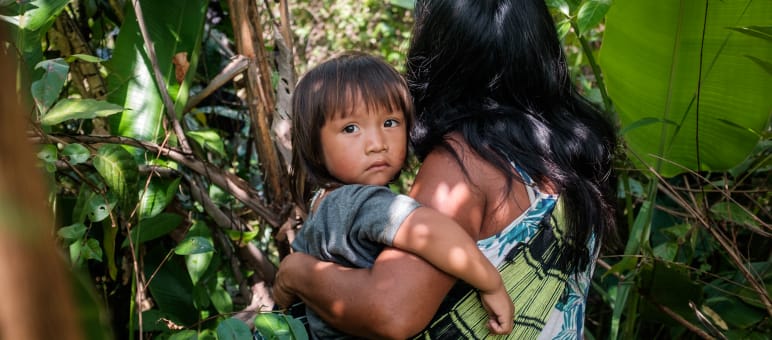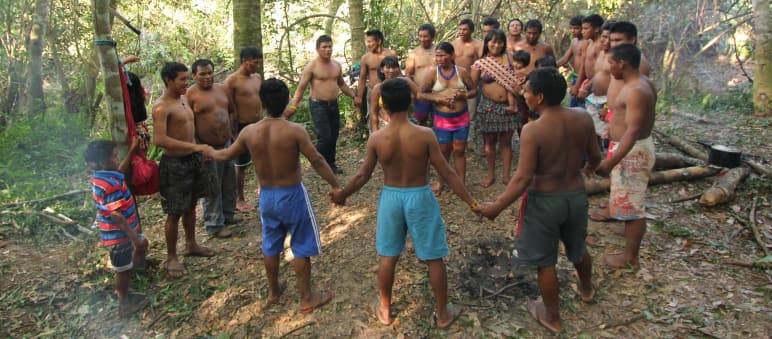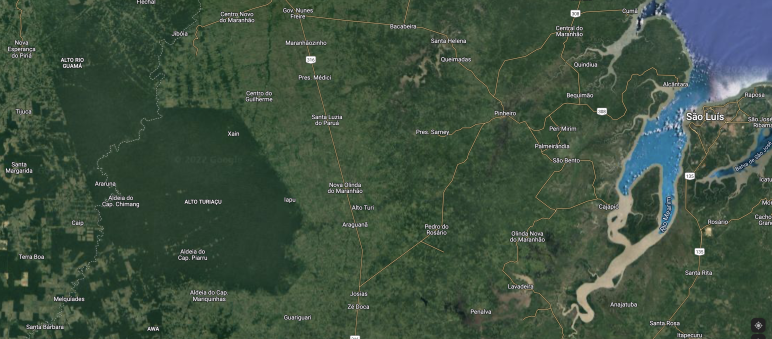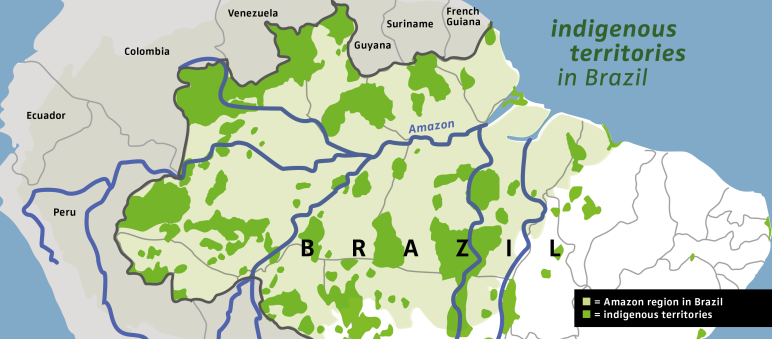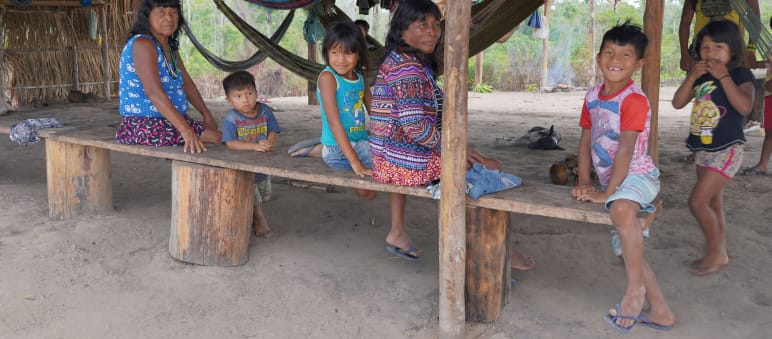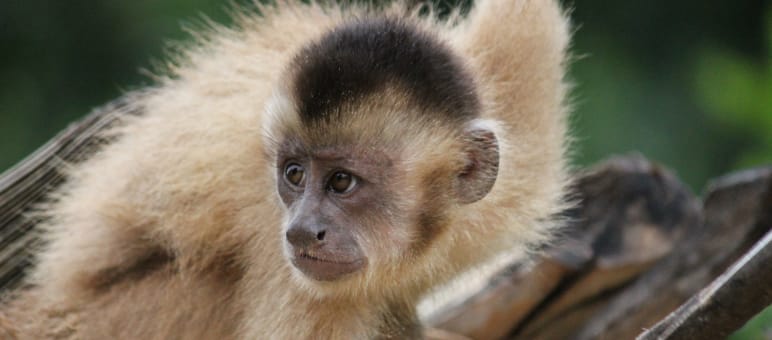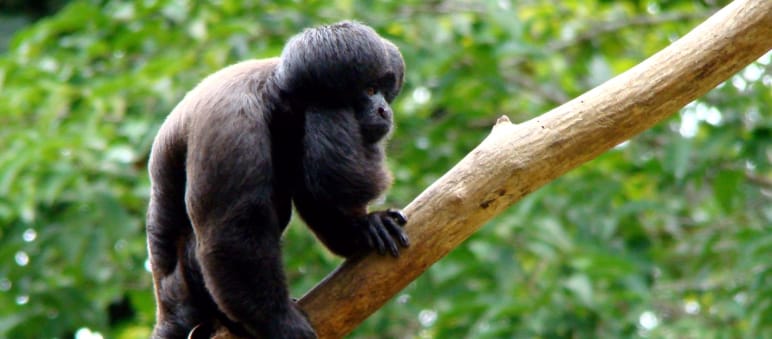The Ka’apor people: defending the Amazon rainforest
For centuries, the Ka’apor have guarded the Amazon’s deepest secrets and protected their ancestral territory. Now they’re defending it with their own education system, their own defense strategy, and an unshakeable determination to protect what powerful forces seek to destroy.
Project Overview
Project FocusEcosystems / Rainforest Defenders
Project Objective ensuring the security of the Ka’apor people’s ancestral rainforest territory
Activities surveillance of the territory, resettlement of villagers, development of self-defense strategies
The Indigenous Ka’apor people are fighting back against loggers, cattle barons and mining companies to protect the last large rainforest area in the southeastern Amazon region.
The state-recognized and demarcated Alto Turiaçu territory of the Ka’apor stands out like a lush, green island amid a sea of destruction. The 531,000-hectare forest – an area nearly four times the size of Greater London – is located in the state of Maranhão. There, in northeastern Brazil, the Amazon rainforest slowly tapers out into the tropical savannas of the Cerrado further south.
The special conditions in the territory provide habitat for a vast variety of wildlife and plants. Some species, such as the critically endangered Kaapori capuchin monkey (Cebus kaapori) and the endangered black saki (Chiropotes satanas), have their last remaining habitat in Alto Turiaçu.
The roughly 1,800 Ka’apor are one of the more than 300 Indigenous peoples of Brazil. With their traditional way of life, they have preserved the rainforest to this day and are defending it against illegal incursions.
Timber and mining companies, cattle breeders, large landowners and property speculators have almost completely cleared the rainforest right up to the edge of the Ka’apor’s protected area and are now encroaching on it. Yet the current protected area is only a remnant of an originally much larger area that had been stolen from the Ka’apor and other Indigenous peoples in recent decades.
Loggers are felling the ipé, massaranduba and cedro trees. The tropical timber is sold to Europe and elsewhere for the production of garden furniture, parquet and wooden decking. Poachers are decimating the area’s abundant wildlife. Mining companies have acquired many thousands of hectares of concessions from the state to mine gold.
How the Ka’apor defend the rainforest
In recent years, the Ka’apor have developed their own self-defense strategies and have set up a council of Indigenous chiefs to make decisions collectively.
To better protect their territory, entire Indigenous communities have moved from deep in the forest to new settlements on the edges of their territory, mostly in reclaimed logging camps or on roads leading into the territory. They have thus blocked 25 logging roads and set up a string of lookouts and defense posts to ward off incursions.
Patrols of Ka’apor warriors track down and expel invaders – by force, if necessary. Often armed with only clubs, bows and arrows, they do what the government could not. They have burned over a hundred loggers’ trucks.
The Ka’apor have established eleven protected areas around the settlements and rely on agroforestry for their livelihoods.
With the Center for Education and Preservation of Ka’apor Knowledge (Centro de Formação Saberes Kaapor, CFSK), founded in 2012 by the council of Indigenous chiefs, they have created their own education system, teaching young people in their own language and instilling their own values. In addition to education, the Center’s work focuses on territorial protection, health, food security, preserving the Indigenous language and culture, as well as sustainable development.
Supporting the Ka’apor
With our partner organization CFSK, we began supporting the project “Etnomapeamento e Autodefesa do território para governança Kaapor” in 2021. The project is dividing the territory of Alto Turiaçu into different management, use and protection zones in cooperation with the inhabitants and developing plans for their self-defense.
This will require organizing and holding meetings in the villages, establishing working and forest ranger groups, surveying and mapping land, purchasing material and equipment, and much more.
A project to empower women in the organization and Indigenous society is also planned.
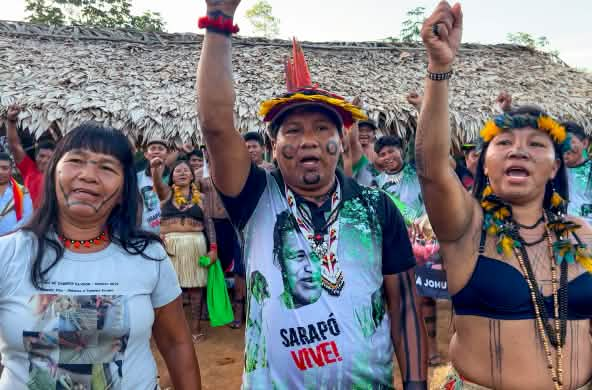
Court halts Wildlife Works' carbon trading project in the Amazon rainforest
A judge has suspended activities of the US company Wildlife Works for a carbon trading project in the rainforest of the Ka'apor people in Brazil.
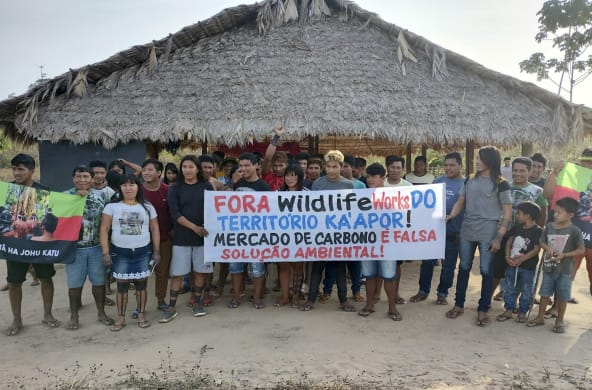
Brazil: Indigenous Ka’apor people denounce abuses by carbon traders
The Indigenous Ka’apor Council Tuxa Ta Pame calls on the Brazilian authorities to evict the carbon trader Wildlife Works from their territory.
